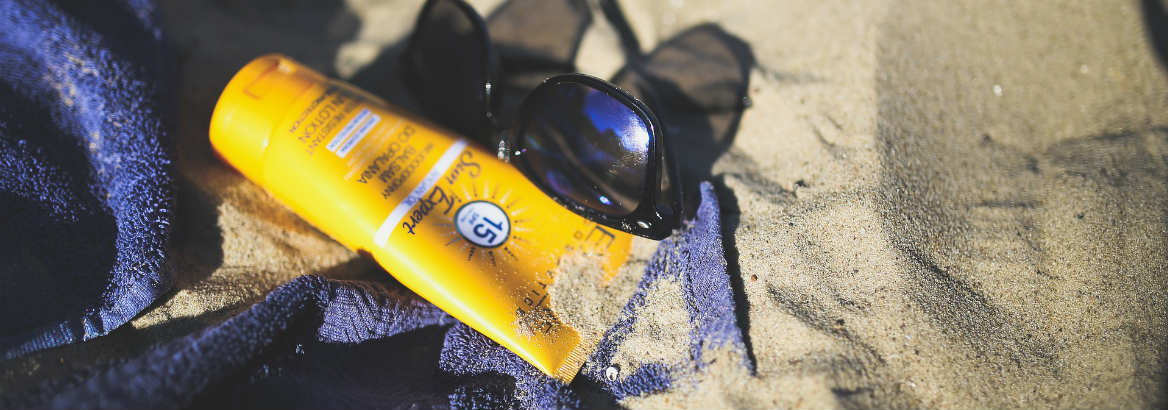Sunscreens have been used for decades with an outstanding safety record. But how can you tell which ones are most effective for you personally?
When sunscreens are applied generously on the skin, they stop radiation that would otherwise reach the living layers of the epidermis and dermis of the skin. Active agents in sunscreens achieve this goal by either deflecting particles of light or absorbing them.
Sunscreens have two kinds of active agents. Physical blockers (also called “inorganic”) deflect particles of radiation away from the skin. The energy scattered by physical blockers are reflected back out of the skin. The two major physical sunscreens are titanium dioxide and zinc oxide. Micronized zinc oxide appears to have better activity in the UVA 1 range than titanium dioxide.
Chemical sunscreens (also called “organic”) absorb particles. The energy absorbed by the chemical blockers is converted to into heat. Examples of the chemical blockers are PABA derivatives, cinnamates, salicylates, benzophenones, and others such as avobenzone. To increase effectiveness and achieve a broad-spectrum status (UVA & UVB coverage), most sunscreens contain a combination of chemical and physical blockers. [1]
According to Consumer Reports National Research Center, half of consumers look at the SPF to determine what they buy. Look at their sunscreen buying guide. They tested 62 sunscreens in 2017 and found half of them did not provide the level of SPF protection promised on their labels.
If you don’t want to pay for a Consumer Reports subscription to evaluate their ratings, they say choosing a chemical sunscreen with at least SPF 40 will help you obtain protection at least SPF 30.
Sunscreen Works
Sunscreens have been used for decades with an outstanding safety record. Potential adverse effects of sunscreens are skin irritation, contact dermatitis and/or vitamin D deficiency. Chemical blockers tend to be more responsible for allergies, whether a contact allergy or photoallergy, such as oxybenzone, padimate O, and avobenzone. [1] Women who may be pregnant may want to choose a sunscreen without retinol palmitate or retinyl palmitate simply because it is derived from vitamin A which has shown to be highly teratogenic (causing birth defects) when ingested.
Safe amounts of sunshine vary among individuals based on a number of factors including their skin type and proximity to the equator. Controversy exists regarding what constitutes a normal range for vitamin D levels, and therefore scientists cannot agree on the minimum daily recommendation. If a person is never in the sun and always covering up along with not ingesting vitamin D fortified foods, they may likely be deficient. Maintaining adequate vitamin D levels through diet and supplementation is important. In 2010, the Institute of Medicine produced a statement which recommended dietary allowance for vitamin D be 600IU per day with the exception of those over age 70, in whom they recommended 800IU per day. [1]
Sports and Baby Sunscreens
The FDA has not defined the word “sports” on a sunscreen. However, much of the time it means the product will stay on 40-80 minutes. Look for words such as “water resistant” or “very water resistant.” Whether a person is in the water or not, reapplication of sunscreen is recommended every two hours. Additionally, the FDA has not defined the term “baby” on sunscreen. Often, it means the sunscreen contains physical blockers only which tend not to irritate a baby’s sensitive skin. The AAD does not recommend applying sunscreen on children 6 months of age and younger. For those children 6 months of age and older, the AAD advises using a physical blocker (more appropriate for sensitive skin) along with keeping them in the shade and in clothes that protect their skin as much as possible. The FDA has not defined the term “sensitive” labeling on sunscreen. Typically, it means the product contains only physical blockers, potentially has eliminated fragrances, and may be hypoallergenic. [2]
The type of sunscreen we recommend is one you will use over and over again. Creams, gels, sticks and sprays are all adequate. The challenge with sprays may be the inability to avoid inhalation and the difficulty in knowing if you have adequately covered the targeted area(s). The FDA requires sunscreens to continue in strength for at least 3 years, but throw out any bottles beyond their expiration date. [4]
Controversy about whether SPF found in makeup is adequate continues, but the majority of the literature findings point to makeup consisting of inadequate amounts of coverage.
References:
- Bolognia, J., Jorizzo, J.L., & Schaffer, J.V. (2012). Dermatology (3rd ed) (pp. 1892, 2197, 2198, 2201). Philadelphia: Elsevier Saunders.
- How to Decode Sunscreen Lingo. (2017). American Academy of Dermatology. Retrieved April 9, 2017 from https://www.aad.org/public/spot-skin-cancer/learn-about-skin-cancer/prevent/sunscreen-labels/how-to-decode-sunscreen-lingo
- Sunscreen Buying Guide (2017). Consumer Reports. Retrieved April 6, 2017 from consumerreports.org/cro/sunscreens/buying-guide
- Sunscreen FAQs. (2017). American Academy of Dermatology. Retrieved April 9, 2017 from https://www.aad.org/media/stats/prevention-and-care/sunscreen-faqs

